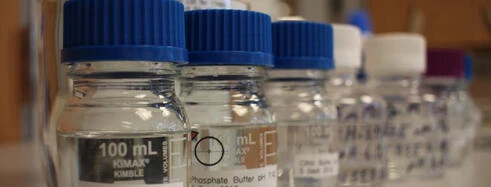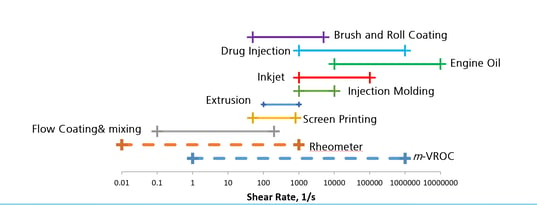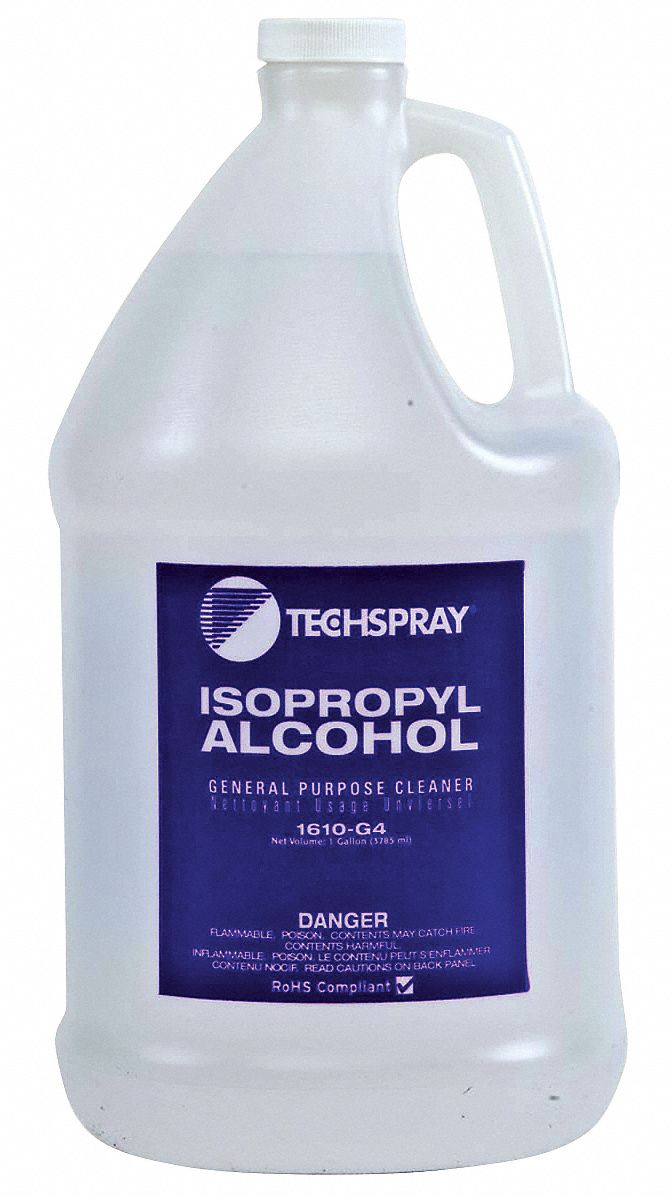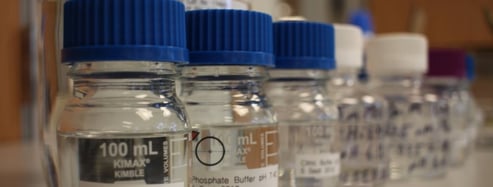Article
Myth or Fact? Clarifying Common Viscosity Myths
Aug 17, 2021

Enoch Daniel
Director
There are so many misconceptions out there about viscosity measurements: how to measure, when to use them, what you can and cannot measure, etc. At RheoSense we pride ourselves on extensive knowledge of viscosity and it's endless applications (yes even we less technical marketers know a thing or two about viscosity). I thought it would be fun to use our expertise to play a little game of "Myths and Facts", where I share some common statements we hear about viscosity and share if they are in fact true, or simply a viscosity myth!
1) You can eyeball viscosity: MYTH
Heptane and isopropyl alcohol are two commonly used solvents. Heptane is a non-polar solvent while IPA is a polar solvent. Visually the two solvents look the same and seem to flow with similar viscosity, however heptane actually has a viscosity of 0.4 cP while IPA has a viscosity of 2.08 cP! That is a HUGE difference and makes the two solvents extremely different!

2) Temperature has a huge impact on viscosity - FACT!
Water is a great example of the impact of temperature on viscosity. When exposed to freezing temperatures, it becomes solid. But, when exposes to boiling temperatures, evaporation will occur and water will transition to a gaseous state. You can measure boiling water at a different viscosity than water that is almost to a solid state. This shows how the same fluid, or solution, can experience very different viscosity measurements depending on the temperature.
3) Viscosity is a parameter that will give me viscosity - MYTH
Intrinsic viscosity can be defined as “a measure of a solute’s contribution to the viscosity of a solution”, or more specifically an increase in viscosity as a result of adding an infinitesimal amount of solute to a solvent. Intrinsic viscosity is a reliable and sensitive indicator of a solute’s molecular interaction with a solvent, and can be used to determine the molecular properties of a sample, such as:
- Molecular weigh and size
- Polymerization
- Interaction of molecules
- Degradation
- Branching structure
- Stability of molecules: aggregation, denaturation, or conformation changes of protein molecules
- Protein structure and melting temperature
4) Protein viscosity isn't important - MYTH
Protein-based drugs are the fastest growing class of drugs for the treatment of many diseases in humans, ranging from cancer to Alzheimer’s disease - even with the COVID 19 pandemic. The rheological behavior of protein solutions will reflect differences in protein size as well as the formation of complex structures or networks resulting from various types of molecular interactions. Viscosity measurements can be used to infer information about protein formulations and probe how formulation changes impact protein solutions. Viscosity control for concentrated protein solutions is very important for the manufacturability and drug delivery routes of many protein therapeutics of the pharmaceutical industry (Zhang et al., 2017).
5) Viscosity changes when exposed to shear - FACT!
Shear rate is the flow velocity gradient in the direction perpendicular to the flow direction (ScienceDirect). Shear rate is a key parameter when measuring viscosity regardless of if your sample is Newtonian or non-Newtonian. Understanding shear rates allows you to explore various factors on how your sample behaves, including if your sample is Newtonian or non-Newtonian. Various shear rates can not only impact your sample viscosity, but can also potentially alter viscosity depending on your sample type. Determining the shear rates at which your sample changes viscosity can guide your product performance, providing the best quality products and user experience.

6) I need a lot of samples for a viscosity measurement - MYTH
Viscosity can be calculated using various methods and there are numerous viscometers on the market today, but not all viscometers are made alike. While some viscometers require up to 40mL sample sizes, RheoSense small sample VROC® viscometers only require 26µL – 100µL samples! VROC viscometers measure and deliver viscosity data with the highest accuracy and repeatability and offer several advantages compared to conventional viscometers and rheometers.
7) I can't run concentrated protein solutions in viscometers - MYTH
When discussing testing concentrated protein solutions, we often encounter the worry that the high concentration solutions are too viscous to run through a viscometer. Concentrated protein solutions typically fall within a viscosity range of 37 - 250cP. RheoSense VROC viscometers have a viscosity range of 0.1 - 100,000cP.
microVISC™: 0.2 - 20,000cP
m-VROC®: 0.1 - 100,000cP
VROC® initium one plus: 0.3 - 1,000 cP (With Autosampler) or 0.3 - 3,000 cP (Without Autosampler)
8) Viscosity measurements are hard - MYTH
Our viscometers have redefined the way viscosity is measured with the benefit of VROC (Viscometer-Rheometer-on-a-Chip) technology. All RheoSense viscometers require only small sample volume, control from low to very high shear rates, and measure true viscosity of Newtonian and non-Newtonian liquids. Our m-VROC and VROC initium one plus leading automated viscometers allowing you to analyze the viscosity of your precious samples quickly and easily. Compared to conventional viscometers and rheometers, RheoSense’s rectangular slit method viscometers (USP chapter 914) offer several advantages:
- Small sample size requirement (26µL – 100µL)
- Cost-effective
- Characterization of both Newtonian & non-Newtonian fluids
- Enable high shear rates without flow instabilities
- Prevent evaporation and contamination of samples
- Render high throughput due to a simple flow-through design

